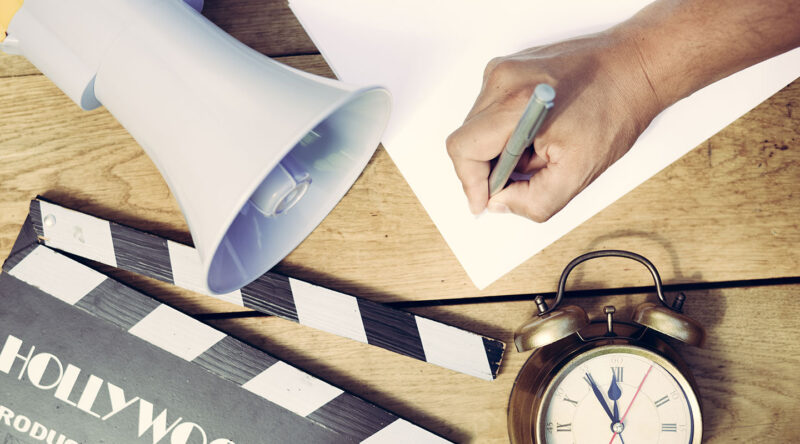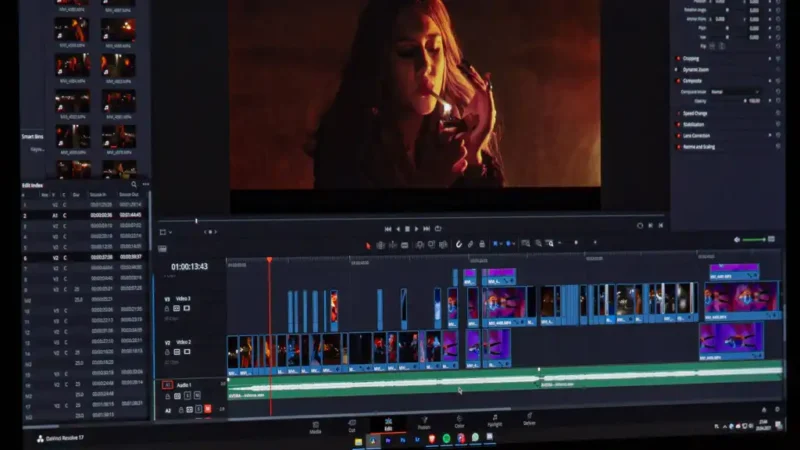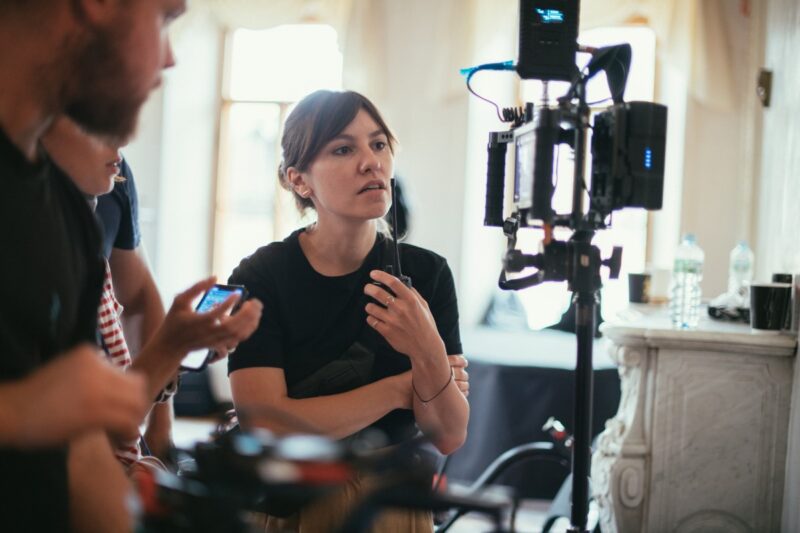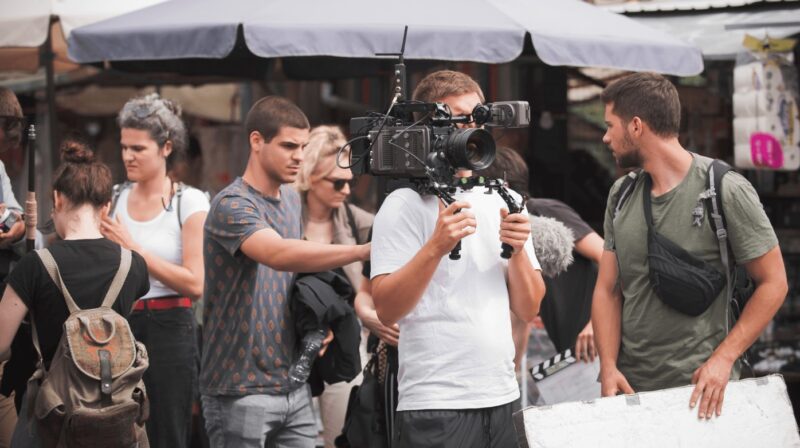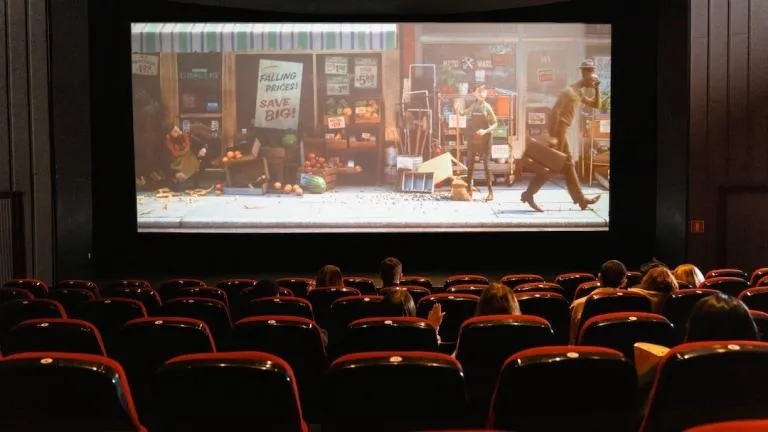When we sit in a dimly lit movie theater or relax on the couch, we hope to be immersed in a cinematic experience.
The colors, landscapes, and characters pull us into the story.
But we shouldn’t forget the crucial role of sound design in enhancing our emotional connection to the film.
Sound design and filmmaking work together to turn a simple visual experience into a multisensory journey.
In this blog, we’ll explore the importance of sound design and how it enhances the art of filmmaking.
Emotion and Atmosphere Through Sound Design
Sound design is the careful creation, selection, and manipulation of audio elements to enhance and elevate a film’s visual aspects.
This includes dialogue, foley sound effects, original sounds, ambient sounds, music, and more.
In major films, entire departments may be dedicated to perfecting these audio elements.
Visual elements like lighting, set and costume design, and lens choices provide crucial information about the scene.
Directors and cinematographers invest significant time and money to achieve the right look. However, without sound, their efforts can fall flat.
Auditory cues add realism, depth, texture, and emotional resonance to scenes. They can also convey offscreen information, build anticipation, or create surprise.
For example, in a suspenseful thriller, the creaking of floorboards, a distant door closing, intense breathing, and rustling leaves can create tension and anticipation without needing any visual cues. Without these sounds, the scene fails to evoke the desired emotional response.
Sound design can also transport us through time and space. A period drama set in the Middle Ages might use background noises like horses, wooden carts, blacksmiths, and outdoor merchants to recreate the era’s ambiance. Similarly, a futuristic sci-fi film can use innovative soundscapes to make alien landscapes feel tangible, even if they are entirely imagined.
Magic of Foley Effects
One of the most fascinating aspects of sound design in film is the creation of foley effects, named after sound artist Jack Foley. Foley artists meticulously recreate everyday sounds to replace or enhance those recorded during filming.
Sounds like rustling clothing, clinking glasses, and footsteps are constructed in post-production studios to achieve authenticity. This creative process involves using various noise-making supplies and carefully performed recreations.
Foley studios typically have extensive collections of surfaces and items. They have drawers of different materials and dozens of shoe styles to mimic any character’s footsteps. They also have shelves full of trinkets and noise-makers to recreate a wide range of sounds. Large tarps can mimic thunder, and a kitchen knife against a shovel can create sword effects. Even simple sounds like plates and silverware are recreated.
Imagine a lively sword fight scene. While the visuals show the intense choreography, it’s the layered sounds of clashing blades, grunting, breathing, heavy impacts, and scuffling feet that pull us into the action.
Foley effects add realism and emotional weight to scenes, ensuring audiences are fully immersed in the on-screen events.
Role of ADR in Sound Design
Another crucial technique in sound design is Automated Dialogue Replacement (ADR), often referred to as “looping.” Recording dialogue in a controlled environment ensures clarity and consistency, avoiding audio issues from moving microphones and noisy settings. It also enhances storytelling by making characters’ voices clear and prominent.
ADR is a meticulous process where the engineer and actor work together to match the timing, tone, and energy of the original visual. The new performance must convey the right emotions and believability. After recording, engineers and producers select the best takes and synchronize them with on-screen lip movements. They may create multiple versions to edit profanity or accommodate different film edits. The mixing process then controls placement, dynamics, tone, and adds subtle ambiance to match the on-screen environment.
ADR and foley processes demonstrate the dedication of sound designers to perfecting even the smallest auditory details, emphasizing their role in enhancing the emotional impact of storytelling.
Combine it All Together
Mixing sound for a feature film is a massive task, involving the seamless blending of thousands of audio clips. This process is often one of the final steps in post-production.
The sound mix for a film can range from stereo (2 channels) to immersive formats like Atmos, which place sounds in front, behind, and even above the audience. This helps recreate real-world environments and adds depth to off-screen elements.
Sound mixers combine foley, ADR, ambiance, on-set audio, and the musical score, using silence strategically to enhance the experience. For instance, in Top Gun, the sound of Maverick’s jet can move around the audience, creating a sense of action even without visual support. In Avatar, the sounds of birds and wildlife immerse viewers in Pandora’s jungles, while distant drips and echoes bring the experience of exploring a cave to life.
Conclusion
Sound design is a crucial part of filmmaking, adding emotion, depth, and realism to the visual story. The collaboration between sound designers and filmmakers creates a multisensory experience that enhances the audience’s connection to the film.
Next time you’re captivated by a thriller, moved by a musical score, or transported to another era by foley effects, take a moment to appreciate the sound design. It’s the subtle power that turns a series of images into an unforgettable cinematic journey.
Related Posts:
- Get Your Film Seen - Why Distribution Matters
- How to Develop Compelling Characters and Why It Matters?
- How To Promote Your Indie Film Using Social Media…
- Learn from the Trenches: Lessons from Indie Film Projects
- Balance Art and Life - Tips for Indie Filmmakers
- How To Build a Support Network for Indie Filmmakers




